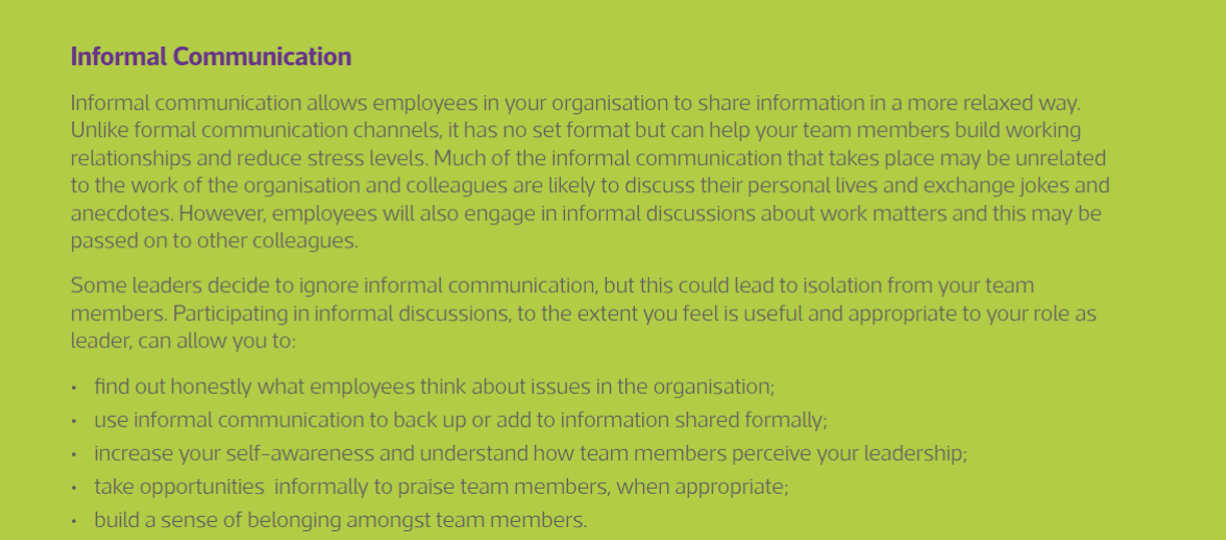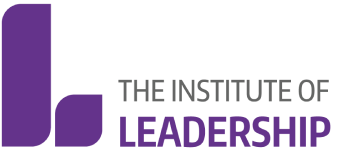Communicating with someone means sharing or exchanging information, for example by speaking, writing, or using technology.
Effective communication means being aware of the communication process which consists of the five elements shown in the figure below:

The sender has a message to convey and needs to decide how to ‘transmit’ it: oral communication via telephone, face to face, team briefing or written communication via email, text, document. The encoding of a message is the production of the message and the decoding is how the receiver is able to understand and interpret the message. Only when the receiver gives a response does the communication become two way.
Face-to-face communication is enhanced by body language (non-verbal communication), tone of voice and the words used. Being clear about why you are communicating will help you to give the right amount of detail and build trust and commitment. If you give very complex or too much information, you could cause confusion. However, providing too little information or being insensitive can lead to mistrust or lack of commitment.



Managing Risks with informal communication
It is important to understand the disadvantages associated with any form of informal communication.

Listening skills
Actively listening is a key ingredient to effective two-way communication and when responding to colleagues and customers. It helps to build trust, respect and influence. Active listening involves not only absorbing verbal information, but being aware of other behaviours such as body language and tone of voice. Look out for hidden messages and then confirm understanding.
Your body language as the listener is also important; do you look as though you are listening: Are you smiling, frowning, nodding, shaking your head as the other person speaks?
Presentation Skills
The ability to present timely and accurate information in a clear and effective way is a key skill if you wish to get your message or point of view across, and good presentation skills are required at almost every level in all organisations.
Presentation Skills Top Tips
- Keep it simple, focus on your core message
- Smile and make eye contact with your audience
- Check any equipment beforehand, have a contingency plan ready
- Keep practising, presentations improve with practice
- Keep your flipchart or PowerPoint text simple, try to just use bullet points for cues
- Avoid using too many PowerPoint slides or transitions, they will detract from your message
- Put statistics and charts into context to make their meaning clear
- Use PowerPoint fonts no smaller than 18 pt to ensure your slides can be read at a distance
- Use graphics sparingly, do not overwhelm your audience
- Do not be afraid to summarise your key points
References
Brooks, I (2008). Organisational Behaviour, Individuals, Groups and Organisations 4th Ed. Pearson Education Ltd Catanzaro, M (2012). Motivating through formal and informal communication Executive Housekeeping Today Guirdham, M (2011). Communicating Across Cultures at Work 3rd Ed. Macmillan Hasson, G (2012). Brilliant Communication Skills: What the best communicators know, do and say Pearson Education Ltd The Business Communication (2017). Advantage and disadvantage of grapevine or informal communication www.thebusinesscommunication.com/advantage-and-disadvantage-of-grapevine-or-informal-communicationThe Business Communication (2017). What is formal communication? www.thebusinesscommunication.com/what-is-formal-communication
Are you an effective communicator? Test yourself with our Scorecard.
If you’re a member, you can test yourself on your Communicating skills and see if you meet the standard.
Spotlights
Further Resources
From the Blog







